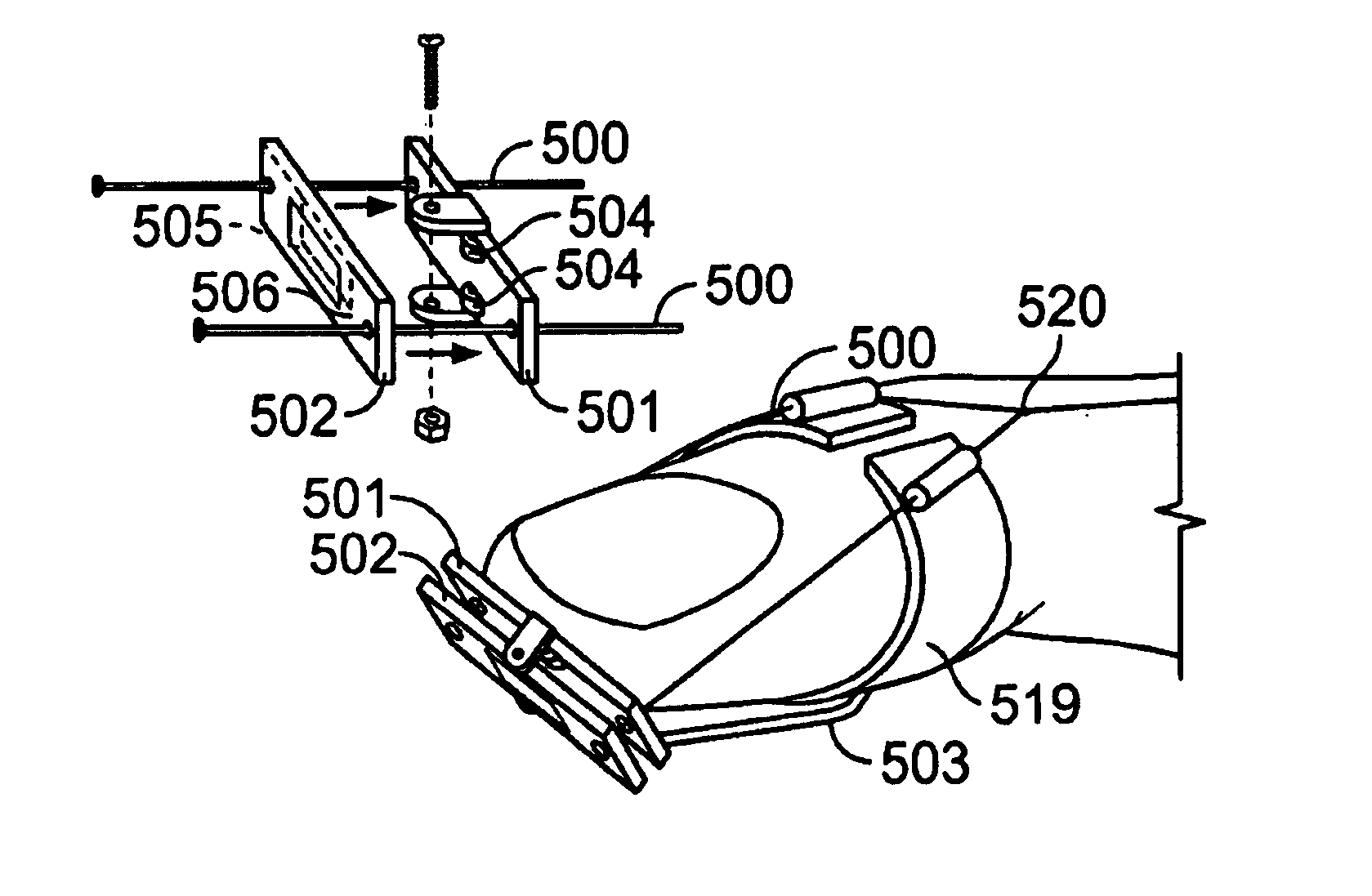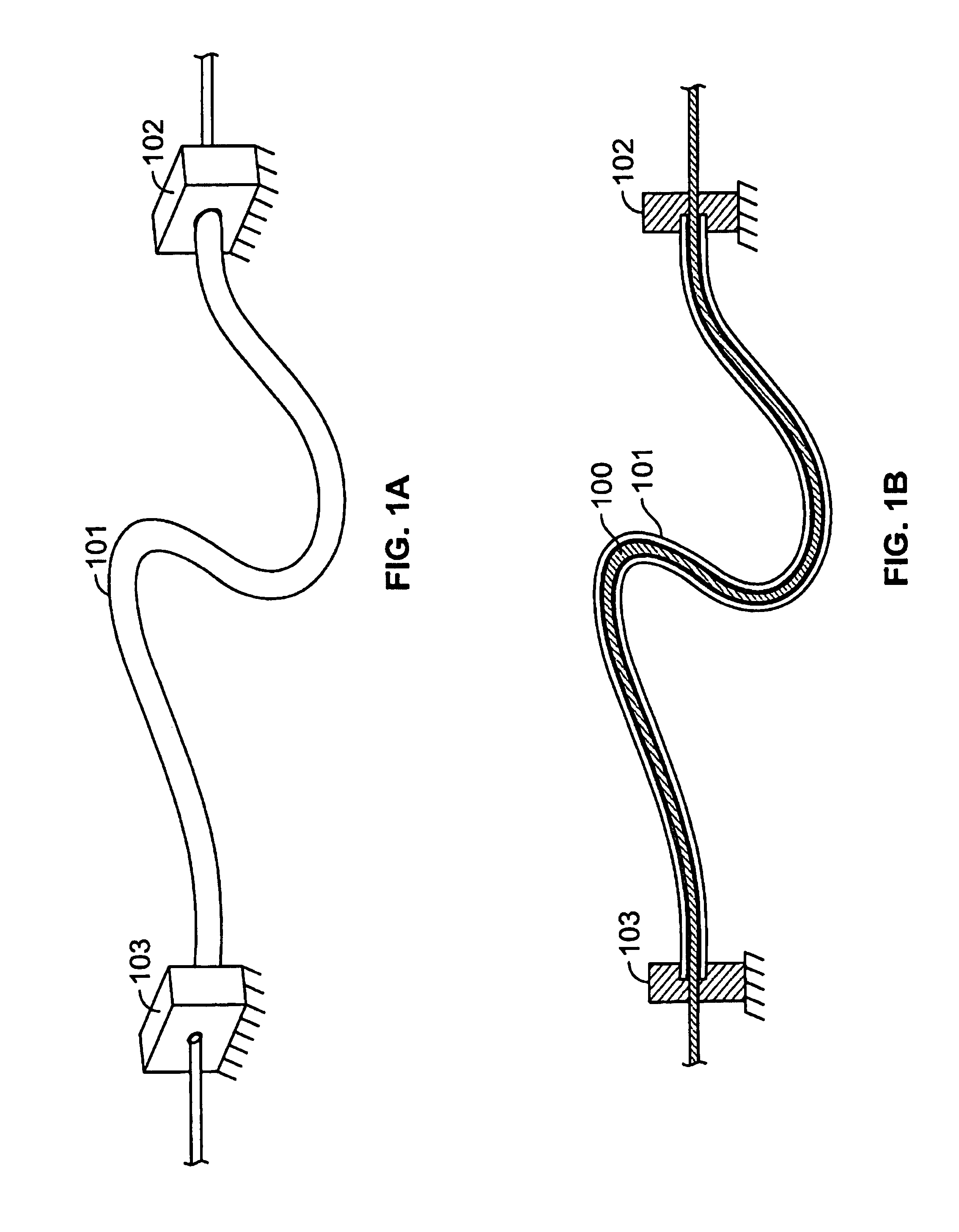Force feedback and texture simulating interface device
- Summary
- Abstract
- Description
- Claims
- Application Information
AI Technical Summary
Benefits of technology
Problems solved by technology
Method used
Image
Examples
Embodiment Construction
[0074]FIGS. 1a and 1b show how the force generated by a force actuator may be transmitted to a chosen location. More specifically, FIG. 1a shows a perspective view of a tendon assembly, and FIG. 1b shows a cross-section view. The tendon assembly is comprised of a low friction, high modulus of elasticity and high tensile strength, flexible tendon cable 100 (e.g., Dacron™ 20 lb. test fishing line or Kevlar™ thread) inside an assembly employing one or more concentric flexible, low-compressibility tubular casings 101 (e.g, Teflon™ tubing). One end 102 of the casing assembly is secured near the force actuator and the other end 103 of the casing is secured near the location where the force is to be applied (e.g., for a feedback glove, the casing may be secured to the wristband, and the force applied to the finger tip). By using a plurality of concentric casings (e.g., a #20 Teflon tube inside a #14 tube) rather than simply increasing the thickness of the wall of a single casing, the resul...
PUM
 Login to View More
Login to View More Abstract
Description
Claims
Application Information
 Login to View More
Login to View More - R&D
- Intellectual Property
- Life Sciences
- Materials
- Tech Scout
- Unparalleled Data Quality
- Higher Quality Content
- 60% Fewer Hallucinations
Browse by: Latest US Patents, China's latest patents, Technical Efficacy Thesaurus, Application Domain, Technology Topic, Popular Technical Reports.
© 2025 PatSnap. All rights reserved.Legal|Privacy policy|Modern Slavery Act Transparency Statement|Sitemap|About US| Contact US: help@patsnap.com



